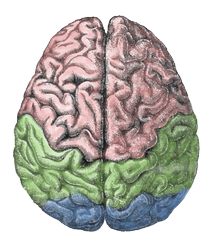
Human Brain Function: Neural conduction & Synaptic transmission, G Proteins, glial cells & dendrites
by bhthanks
Neural conduction & Synaptic transmission; Neurotransmitters, DNA & G proteins; Neuroscience: dendrites & glial cells; parts of the brain & Human Brain Function affected by drugs.
Dendrites
Neurons or Nerve Cells, Showing the Nuclear Regions and the Long Axons and Dendrites
 | Neurons or Nerve Cells, Showing the Nuclear Regions and the Long Axons and Dendrites ... Neurons or Nerve Cells, Showing the Nuclear Regions and the Long Axons and Dendrites is digitally printed on archival photographic paper resulting in vivid, pure color and ... AllPosters |
Glial Cells
Multipolar Motor Neuron and Surrounding Glial Cells
 | CafePress Glial Stem Cell Culture, Light Micrograph Round Round 4" MDF Holiday Ornament CafePress Only $8.99 |
Dendrites and glial cells: subjects of neuroscience research
Dendrites and glial cells are some hot subjects of neuro-scientific research. Glial cells comprise a little over 90% of the brain, or 10/11 parts of the brain are glial cells. There are glial cells which bring nutrition such as zinc, potassium, calcium, and sodium to and through the brain. There is also waste that has to be removed from the brain, and that is collected by other glial cells that takes it away. The glial cells are the delivery trucks and garbage trucks of the brain.
Dendrites are little hairs at the end of each neuron that have receptors, which accepts the neurotransmitter, lets in zinc and other minerals and lets out waste.
The neurotransmitter is like a key which unlocks the hole to the dendrites, allowing waste to go out and new food to be delivered. The way this whole process works is a fascination for many.
Drugs pollute the body and poison the brain. Nutrients feed it and make it healthy. We want fatty acids such as omega-3 from fish. This is all learnt from research.
If the neurotransmitter locks into the receptor, then the gates are open, and the delivery and waste is going back and forth. If the brain doesn't have nutrients (like fuel), then it can't function. Everything collapses and there is less energy in the brain. This happens in different ways, such as in drug users, malnourished people, Alzheimer's etc. When it happens in Alzheimer's, plaque builds up, and this creates a gummy substance that clogs up the brain, causing thinking and memory to be extremely difficult. This causes dementia. The axons collapse, causing neuritic plaques and neurofibrillary tangles. Vitamin D helps the brain absorb vitamins, minerals and nutrients.
Neurotransmitters and Neuromodulators
 | Neurotransmitters and Neuromodulators: Handbook of Receptors and Biological Effects A complete update of the highly acclaimed handbook with data on all neurotransmitters and the majority of neuromodulators. The coverage is now even more comprehensive, with ... Wiley-VCH Only $82.19 |
DNA
 | Signature in the Cell: DNA and the Evidence for Intelligent Design HarperOne |
Neurotransmitters can act directly on DNA via G proteins
The discovery that neurotransmitters can act directly on DNA via G proteins uncovered a mechanism through which experience and genes can interact.
What is DNA? DNA holds our genes which makes our personality and looks, among many other things.
Neurotransmitters interact and affect DNA through hitting the G-protein which hits the DNA. If neurotransmitters are affected by drugs, then this affects the whole interaction differently based on different drugs. If a pregnant woman takes cocaine, this affects her DNA which is given to the child, the child inherits deformed DNA. The child is born crack-addicted with messed up and affected DNA. The DNA will stay deformed even if the child is weaned off of the crack addiction. This is a big problem.
G Proteins
 | G ProteinsAcademic Press / Only $92.95 |
Brain Function and how it is affected by drugs
The findings described in research studies can significantly change a person's understanding of brain function.
The neurotransmitter unlocks the door in the receptor on the dendrite. It opens the gate and releases minerals back to the button. Reuptake happens in a drug user, when the button is blocked by cocaine, and stays out. If a person is on cocaine for a while, everything gets burnt out eventually. The drugs block the reuptake in the button, and the cell body won't get re-nourished. Amphetamines speed up the process and transmissions in the brain. Heroin slows one down and makes one lethargic.
Human Brain Function & Regions
 | Human Brain Function & Regions FRAMED POSTER - 18" x 24" Educational Print in Black Metal Frame. Our FRAMED Poster is brilliantly illustrated and loaded with facts, offering a unique visual introduction to the fascinating human brain. This poster - called BRAIN WORKS - ... Imagine This Enterprises |
 | The Human Brain Book The Human Brain Book is a complete guide to the one organ in the body that makes each of us what we are - unique individuals. It combines the latest findings from the field of ... DK ADULT / |
Neural conduction and synaptic transmission
It is important for bio-psychologists to understand neural conduction and synaptic transmission, and would certainly be helpful if all psychologists would have such knowledge, in order so that they will understand the causes and know what's happening when people function well or don't function well.
When a person is high or low, it would be helpful to know what's happening in the brain and where in the brain it's happening, and in that way understand what drug they are on, or what to expect of the person, and identify what's happening in the brain by the person's behavior.
For example, a person with very yellow teeth and other symptoms is exhibiting the sign of being addicted to marijuana/weed, which is eating up the brain.
This person would need to join the 12-step program to get better.
Understanding neural conduction and synaptic transmission helps identify causes of behavior and feeds professionals as to what's going on behind the scenes and how the individual can be helped.
Synaptic transmission
 | Synaptic TransmissionAcademic Press / Only $105.0 |
 | Cholinergic modulation of synaptic transmission and plasticity: A Ph.D. thesis on the cortical ac...VDM Verlag Dr. Müller / |
The human brain operates in a similar fashion as a particularly complex computer
(although of course, it is much more than that)
Just as computers operate on binary (yes-no) signals, the all or none action potential is the basis of neural communication. According to some views, the human brain operates in a similar fashion as a particularly complex computer (although of course, it is much more than that). A computer's functions depend on how signals travel through it. Everything depends on what is keyed into it, whether it is taken care of and maintained, whether it gets the proper electricity or signals to do its job, and whether all parts attached to it are working well.
So too, in the human brain- it's function depends on how signals travel through it, what goes in and out of it, whether it is given the proper nutrition that it needs, whether it is misused and overloaded with garbage, whether it gets the proper signals to do its job and whether all parts attached to it are working well. All of these factors determine how well the brain functions, which in turn, affects how the whole body, personality, emotions, and all body functions and systems are working. Of course, these are the factors involving nature, and this world was created in such as way that it generally functions according to the rules of nature.
Neural Conduction
 | Buschbacher's Manual of Nerve Conduction StudiesDemos Medical / |
 | Manual of Nerve Conduction Study and Surface Anatomy for Needle ElectromyographyLWW / |
Human Brain- Wiki
Image Source:
http://en.wikipedia.org/wiki/File:Cerebral_lobes.png
Description=Human brain, Source=derivative work - Gutenberg Encyclopedia
You might also like
Bless You and Gesundheit - Why Do We Say This When People Sneeze?Have you ever wondered what bless you and gesundheit means and why people say...
Ways Native Plants Can Help Control Invasive PlantsPlanting or growing native plants can help to control invasive plants in nume...



 eFaxon 05/11/2012
eFaxon 05/11/2012
 BNSF's Case of Illegal Genetic Screening in the Workplaceon 01/01/2012
BNSF's Case of Illegal Genetic Screening in the Workplaceon 01/01/2012
 Delicious Cake Recipes From Scratchon 04/03/2012
Delicious Cake Recipes From Scratchon 04/03/2012
 Easy and Delicious Recipes for Newbieson 04/03/2012
Easy and Delicious Recipes for Newbieson 04/03/2012



Comments